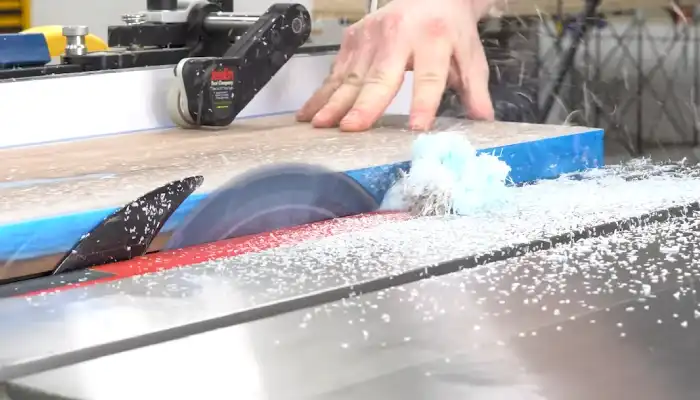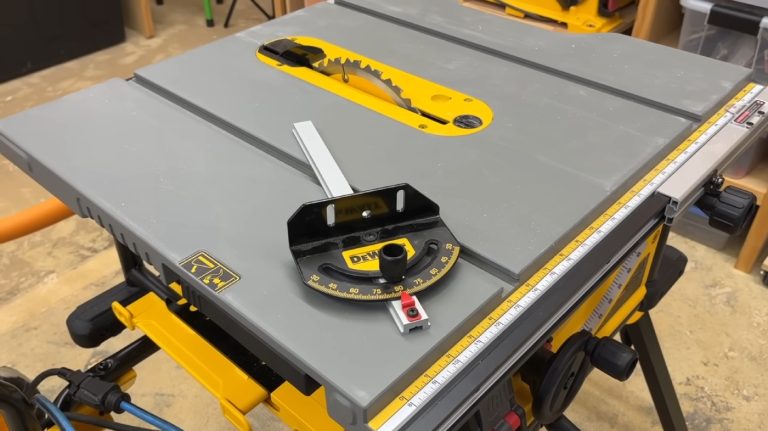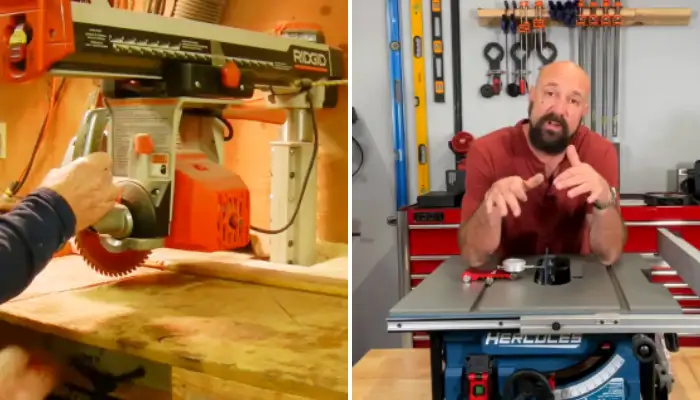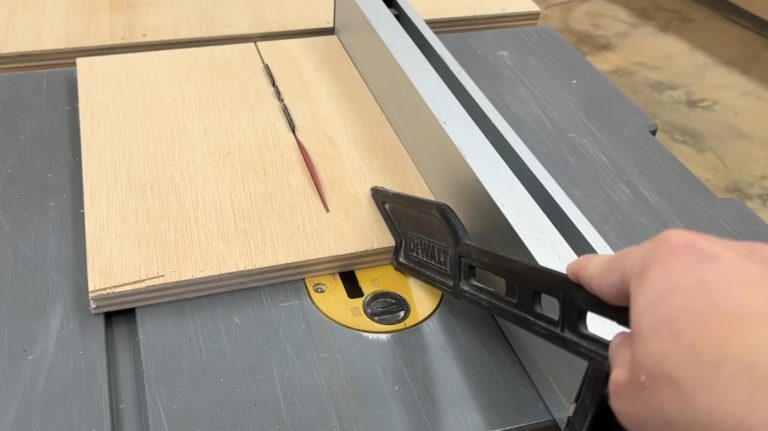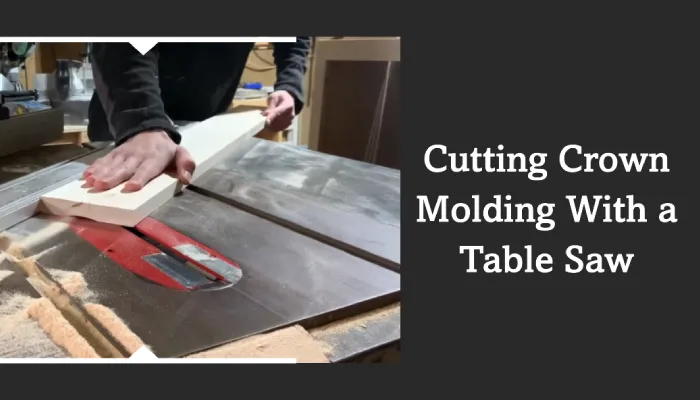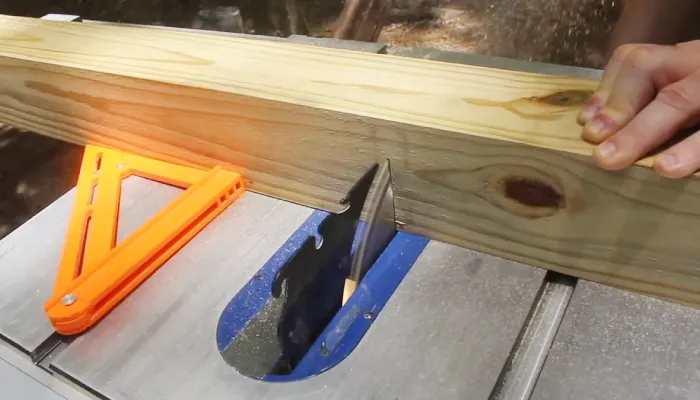Can You Cut Epoxy Resin With a Table Saw: True Facts [Revealed]
You want to cut epoxy resin, but you’re unsure if a table saw is right for the job. As a matter of fact, you can cut epoxy resin with a table saw.
Cutting epoxy resin with a table saw requires the right blade. Choose a fine-toothed one for optimal results. Next, mark your cut line using a straightedge and pencil. Then, set up your table saw and adjust the blade height.
To finish, feed the material slowly through the saw while keeping your fingers a safe distance away from the blade.
Get ready to slice and dice epoxy resin like a pro. Our detailed guide will walk you through every cutting step with a table saw. Say goodbye to confusion and hello to smooth, effortless cuts. Let’s get started.
How to Cut Epoxy Resin With a Table Saw: Step-By-Step Guide
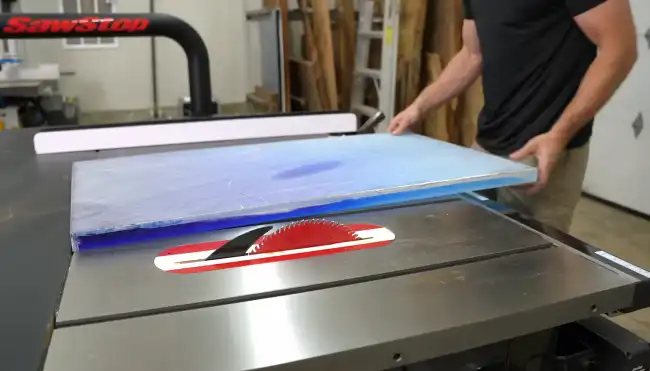
It’s easy to use a table saw to cut epoxy resin. Here’s how:
Step #1: Prepare the work area
Step #2: Select the right blade
Step #3: Mark the cut line
Step #4: Set up the table saw
Step #5: Feed the material slowly
Step #6: Smooth the edges
Step #7: Clean up
Let’s get into the details:
Step #1: Prepare the Work Area
Before you start cutting epoxy resin, clean up the workspace and wear proper PPE to ensure a safe and efficient process. Here are some steps to follow:
- Clean and well-lit workspace: Ensure that the area is free from any unnecessary items that can cause accidents. Adequate lighting is also important to ensure that you can see what you’re doing.
- Ventilation: Ensure the workspace is well-ventilated to prevent inhaling harmful fumes.
- Personal Protective Equipment (PPE): Wear appropriate PPE such as safety glasses, a dust mask, and gloves to protect yourself from any potential harm.
Step #2: Select the Right Blade
Once you’ve prepared your workspace properly, choosing a suitable blade designed specifically for cutting hard materials such as epoxy resin is crucial. This ensures a safe and efficient cutting process.
A carbide-tipped or diamond blade is recommended for cutting epoxy resin since they are known for its toughness and durability. These types of blades are ideal for cutting through hard materials without causing excessive heat or damage to the resin.
Make sure your blade is sharp and in good shape. Dull blades can cause excessive heat, which may damage the epoxy resin and compromise the quality of your project. Always check the blade before use and replace it if it’s worn or damaged.
Step #3: Mark the Cut Line
It’s time to mark the cut line. You can use a ruler or a straight edge to help guide your markings and ensure they are perfectly straight.
When marking the cut line, use a fine-tipped marker or a sharp pencil to ensure that the line is clear and visible. Avoid using a dull pencil or a thick marker, as this can result in a blurry or indistinct line.
Also, make sure to mark the line in an area where the blade of the table won’t cover it, as this can result in a messy cut.
Step #4: Set up the Table Saw
Now’s the time to set up your table saw. Follow these steps to ensure a safe and successful cut:
- Adjust the blade height: Before starting the cut, adjust the blade height so that it extends slightly above the thickness of the epoxy resin. This will prevent the blade from getting stuck and causing damage to the workpiece or the saw.
- Check the blade’s angle: To ensure a straight cut, ensure the blade is perpendicular to the table surface. You can use a square or a protractor to check the angle of the blade.
- Use a sturdy work surface: Use a sturdy, flat table or workbench to support the epoxy resin during cutting. This will prevent it from shifting or vibrating during the cut, which can cause inaccurate cuts or even damage to the saw.
- Consider additional supports: If the workpiece is large, consider using additional supports or clamps to secure it in place. This will prevent it from moving during the cut, causing inaccurate cuts or even injuries.
- Use proper safety gear: Always wear eye and ear protection when using a table saw. Additionally, avoid loose-fitting clothing and jewelry, and keep long hair tied back to prevent accidents.
Step #5: Feed the Material Slowly
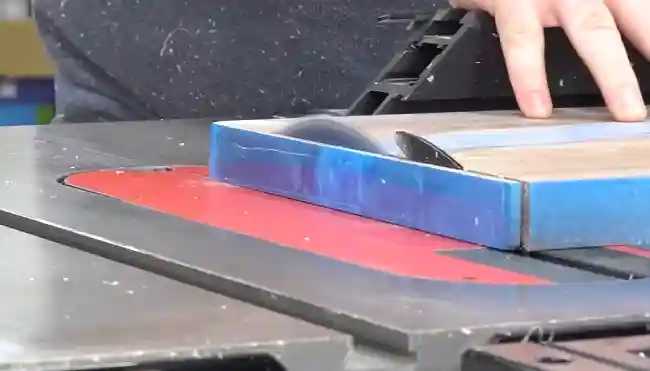
Once the blade starts spinning, ease the epoxy piece closer and let it glide through smoothly, avoiding any unnecessary pressure that could cause damage. Remember to let the blade do the work, not force the material through.
Applying too much pressure can cause excessive heat, leading to cracking or melting of the resin. To ensure a clean cut, keep your hands away from the blade and use a push stick or a push block to guide the material through. This will prevent accidents and ensure a straight and accurate cut.
Also, make sure to use a sharp blade and adjust its height so that it clears the material’s thickness.
Step #6: Smooth the Edges
After completing the cut of your epoxy resin with a table saw, you need to smooth out any rough edges left behind by the saw. Failure to do so may result in a less-than-perfect finish and cause injury.
Using sandpaper or a file, gently rub the edges to eliminate any roughness, and do not apply excessive pressure or overheat the resin. Begin by using coarse grit sandpaper or file to remove any large burrs or rough spots. Move up to a finer grit paper or file to refine the edge and create a smooth finish.
Remember to work slowly and carefully, frequently checking your progress to ensure you achieve the desired result.
Step #7: Clean Up
Remember to clean up your workspace after cutting so your finished project shines and impresses.
You must thoroughly clean the work area after cutting epoxy resin on a table saw. To clean up, use a broom and dustpan to sweep up any debris or dust that may have accumulated. Be sure to dispose of the waste materials properly according to local regulations.
Next, use a damp cloth to wipe down the work area and remove any remaining dust or residue. And in the end, check the floor for any leftover debris or dust, and sweep or vacuum as needed.
Is applying lubricant to the table saw blade necessary when cutting epoxy resin?
Lubricating the table saw blade isn’t necessary when cutting epoxy resin. Since it’s a thermosetting polymer, it generates less heat when cut.
But if there is excessive heat or the resin is sticking to the blade, lubricants designed to cut hard materials can reduce friction and prevent melting or sticking.
You need to note that using the right lubricant can help improve the cut’s quality and prolong the blade’s life, but it is not essential for cutting epoxy resin.
What is the best lubricant for a table saw blade?
Based on expert advice and manufacturer recommendations, paste wax and lithium grease are the best lubricants. These lubricants help to reduce friction between the blade and the saw’s surface, which can prolong the blade’s life and improve the cut quality.
Paste wax is popular due to its easy application and effectiveness in preventing rust and buildup on the blade. Lithium grease is a more heavy-duty option that offers excellent lubrication and protection against corrosion.
When selecting a lubricant for your table saw, it’s essential to choose one that is compatible with your saw and regularly apply it to the blade for optimal performance.
How thick of a resin piece can you safely cut with a table saw?
When using a table saw for cutting epoxy resin, it is generally safe to cut pieces up to 1 inch thick. But you should refer to your saw and blade instructions to ensure you are within recommended limits.
Be aware that thicker pieces may require multiple passes or alternative cutting methods to prevent heat buildup and blade damage. Always use caution and follow safety protocols when using a table saw and any material.
What type of blade teeth configuration is best for cutting epoxy resin on a table saw?
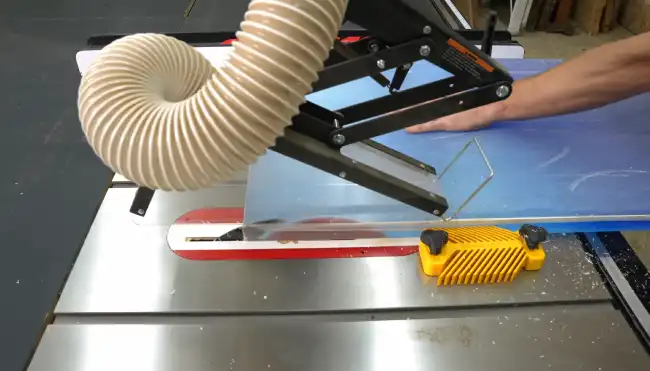
A blade with a high tooth count and a fine-tooth configuration is optimal for achieving smooth and clean cuts through epoxy resin on a table saw.
A blade with at least 60 to 80 teeth or more is recommended for cutting epoxy resin effectively. The high tooth count helps to reduce the risk of heat buildup and potential melting or sticking of the resin.
Fine-tooth configuration produces smaller, cleaner chips, minimizes heat buildup, and prevents resin from melting or sticking.
You should consider the specific characteristics of the resin being cut and consult the manufacturer’s recommendations for the most suitable blade teeth configuration. Adjustments may be necessary based on the resin’s hardness, additives, or fillers.
Safely and Effectively Cut Epoxy Resin With a Table Saw
Cutting epoxy resin with a table saw is possible and easy with the right blade, proper techniques, and safety precautions.
While lubricating the table saw blade is unnecessary for cutting epoxy resin, it can help with excessive heat or sticking in certain situations.
The best lubricants for a table saw blade are paste wax and lithium grease. When it comes to thickness, it is generally safe to cut epoxy resin pieces up to 1 inch thick, but always refer to the manufacturer’s guidelines for your specific equipment.
For the blade teeth configuration, a high tooth count and fine-toothed blade (around 60 to 80 teeth) are recommended to achieve clean cuts with minimal heat buildup. Remember to prioritize safety, follow proper cutting techniques, and consult manufacturer guidelines for the best results when working with epoxy resin on a table saw.

